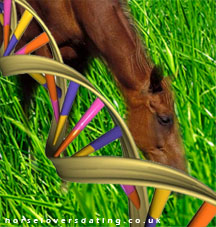Simple Cross Country Training

If you are planning to go cross country, but don’t have access to a course, bear in mind that you don’t actually need to go to a proper course, you can practice at home out hacking.
You can practice cross country schooling over logs, rather than avoiding the logs as you usually would, step over them and count going round them as refusals and run outs.
Water jumps are one of the most important aspects of a cross country course. Most courses have one, some have multiple water jumps. You can practice for water jumps by stepping your horse through puddles, on a suitable surface you can canter through.Going from light to dark should also be practiced as it can be scary for the horses as their eyes take a while to adjust. Going from dark to light can be equally scary, as this scenario can have a temporary blinding effect.
During the duration of a cross country competition you should never gallop flat out. Doing this strains the horses tendons and ligaments and tires him out , while also straining his heart and lungs. For these reasons you should take the course at a strong (but not fast pace) that is both steady and controlled. When you reach a point where there are no jumps, you can make up time by lengthening the pace, or easing into a totally controlled gallop.
For your horse to be fit enough to gallop parts of the course you need to practice. You can canter over fields and through the woods. You must first make sure the ground is safe, it must be soft, but firm. It must not be muddy or slippy, nor hard and dry. The area must be of fairly soft grass or good soil.
Before you compete, you should apply a fairly generous amount of event grease, to ensure that if you horse does hit a jump, he will slip and slide over it.
Once you have finished your round, and again at the end of the day, run your hand down your horse,s legs and check for cuts, scrapes and swellings.
Happy schooling and competing!!!
Good Luck!!!
Eniola Odurinde

 International team of scientist from various lab all over the world has been working at decoding the genome of various animals of late, last week, it was reported that the genome of domestic pig has been full decoded, yesterday, it was the turn of the domestic horse.
International team of scientist from various lab all over the world has been working at decoding the genome of various animals of late, last week, it was reported that the genome of domestic pig has been full decoded, yesterday, it was the turn of the domestic horse.
Recent Comments